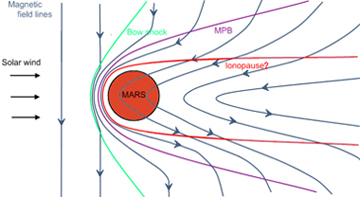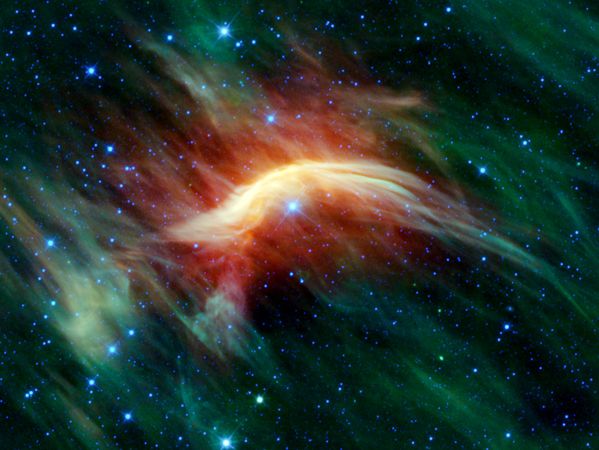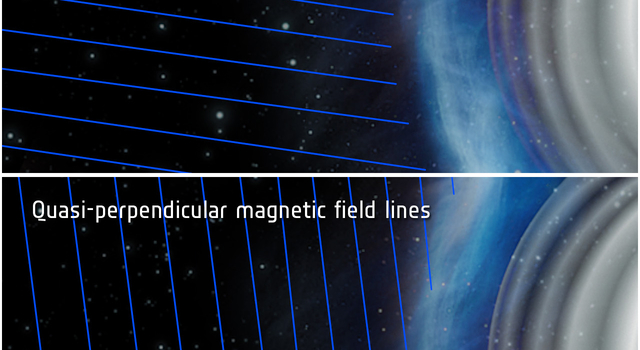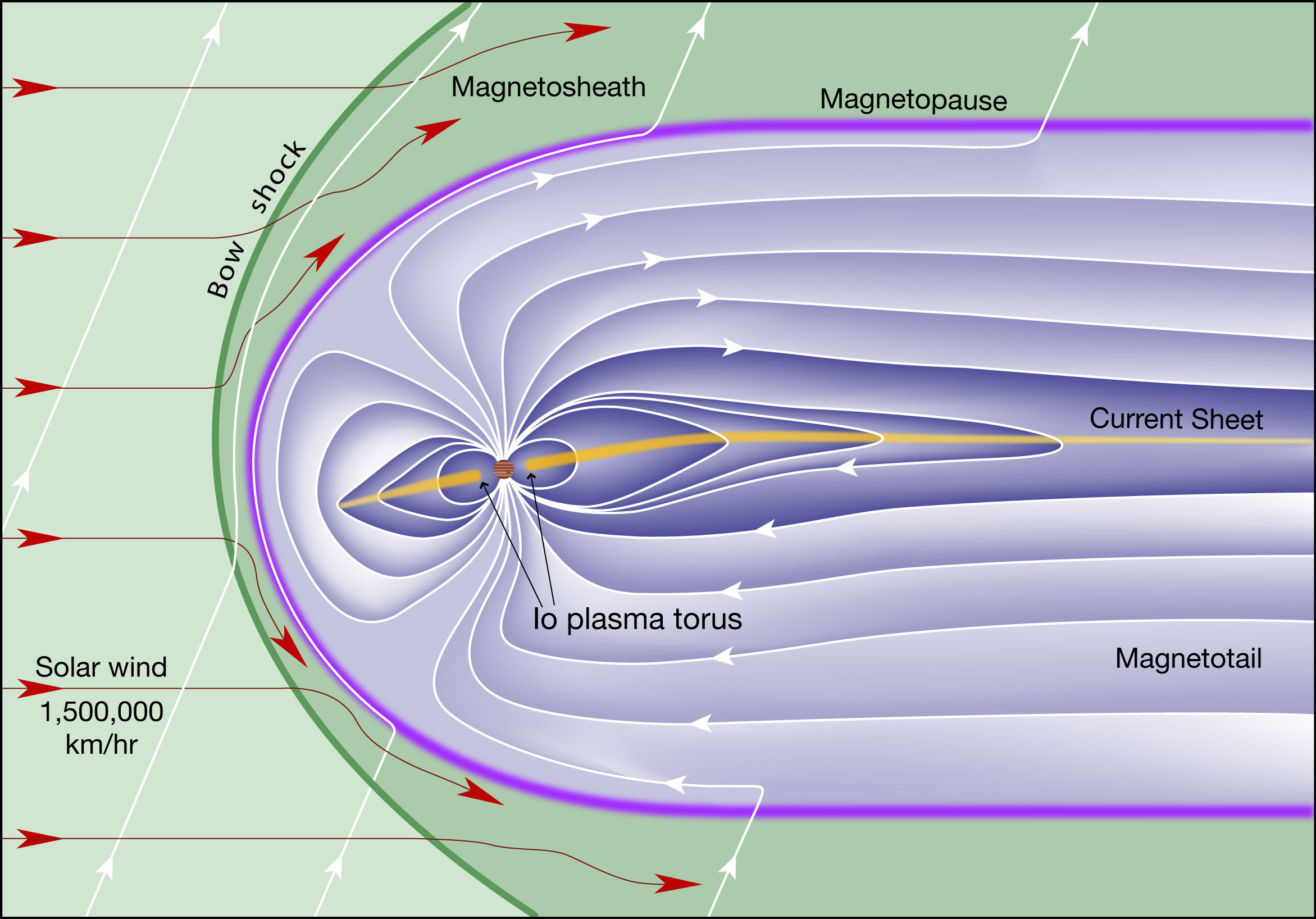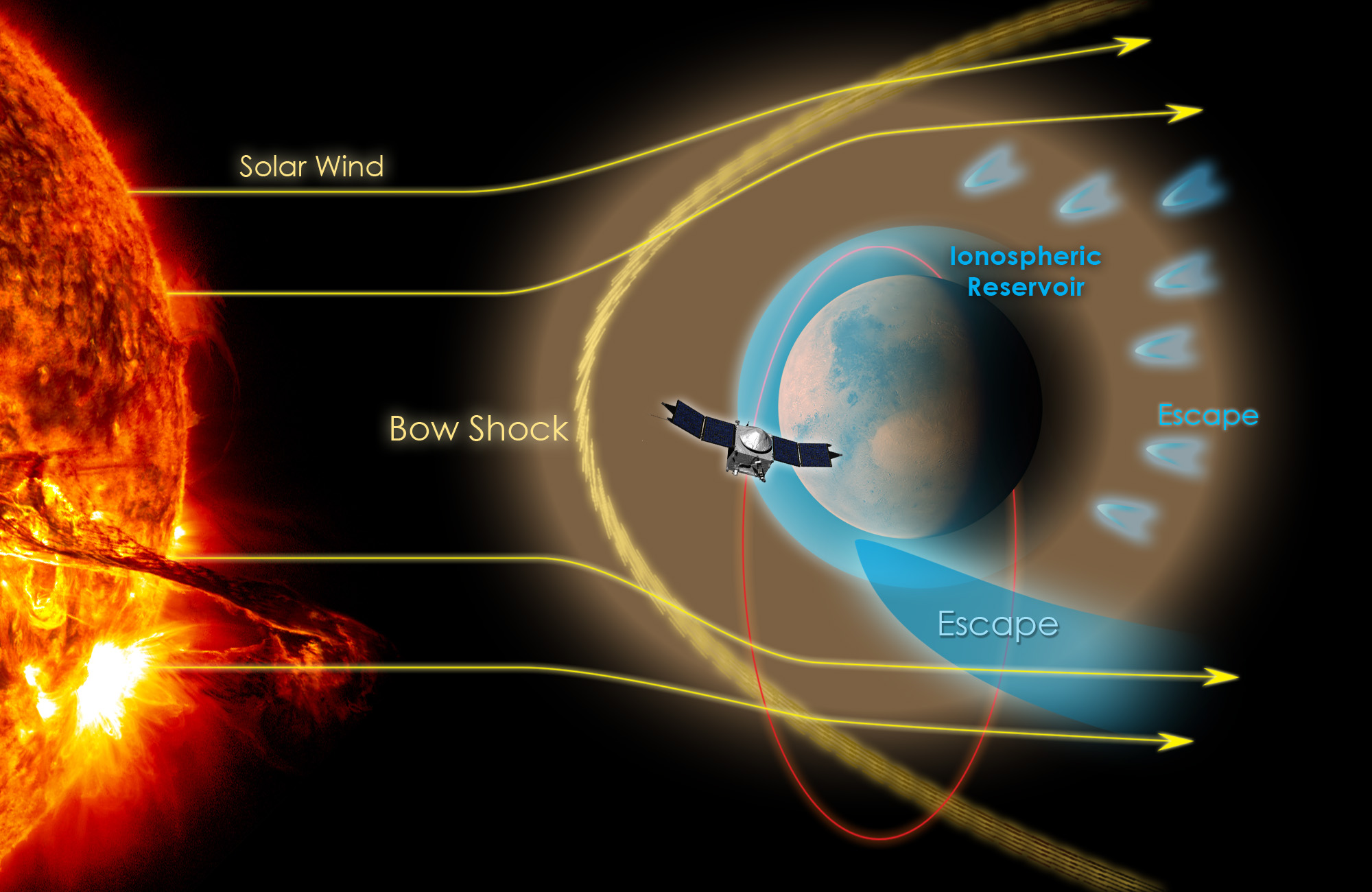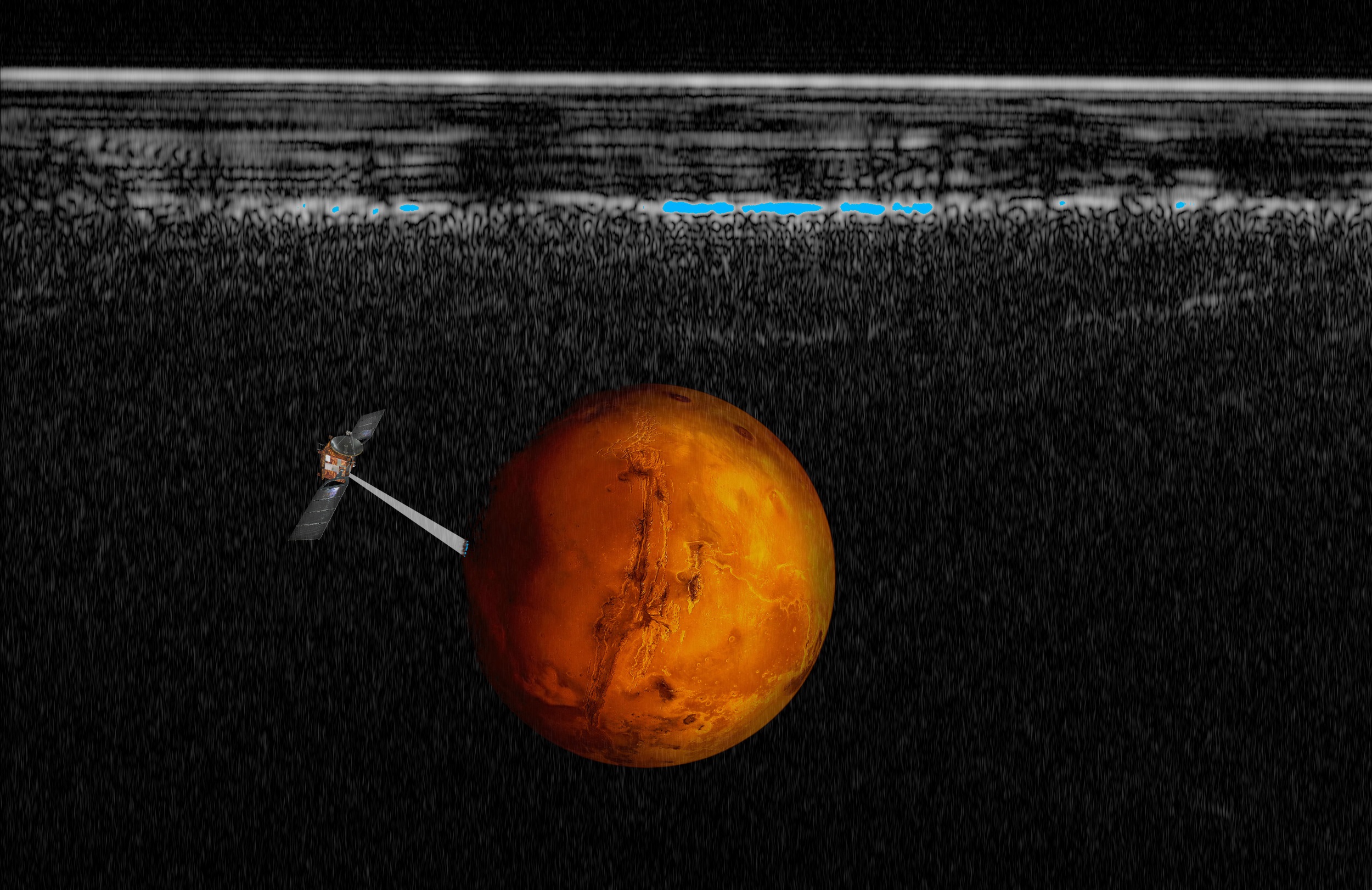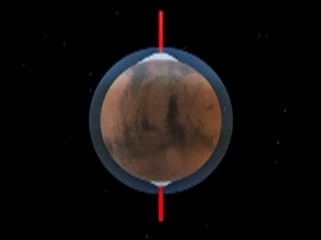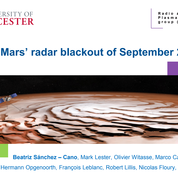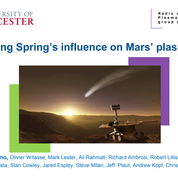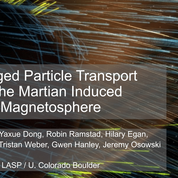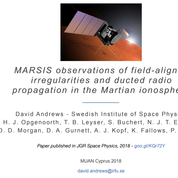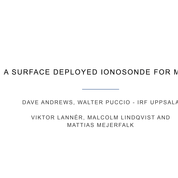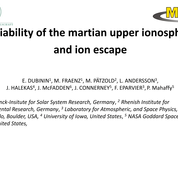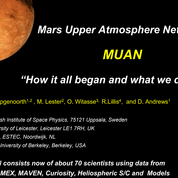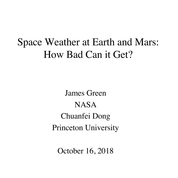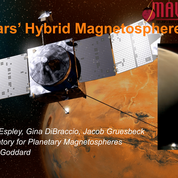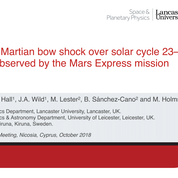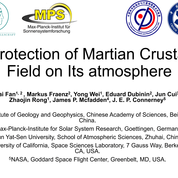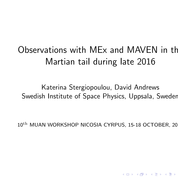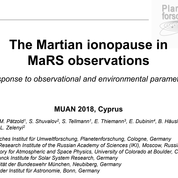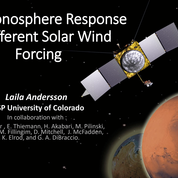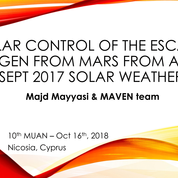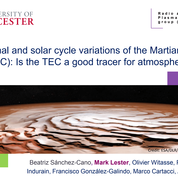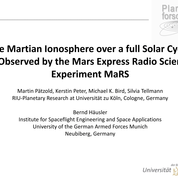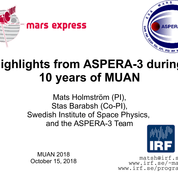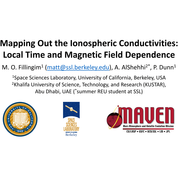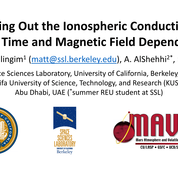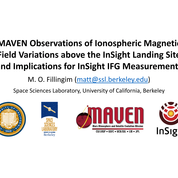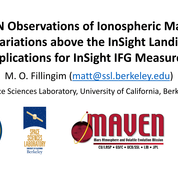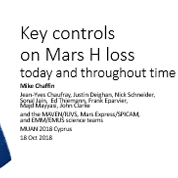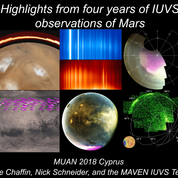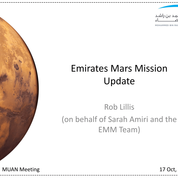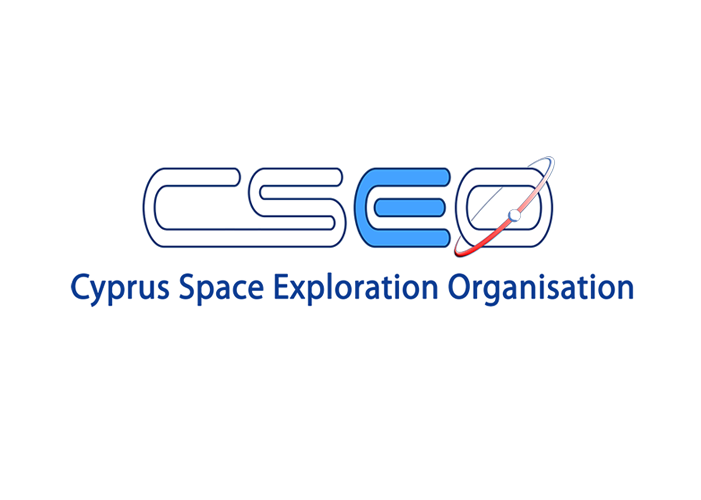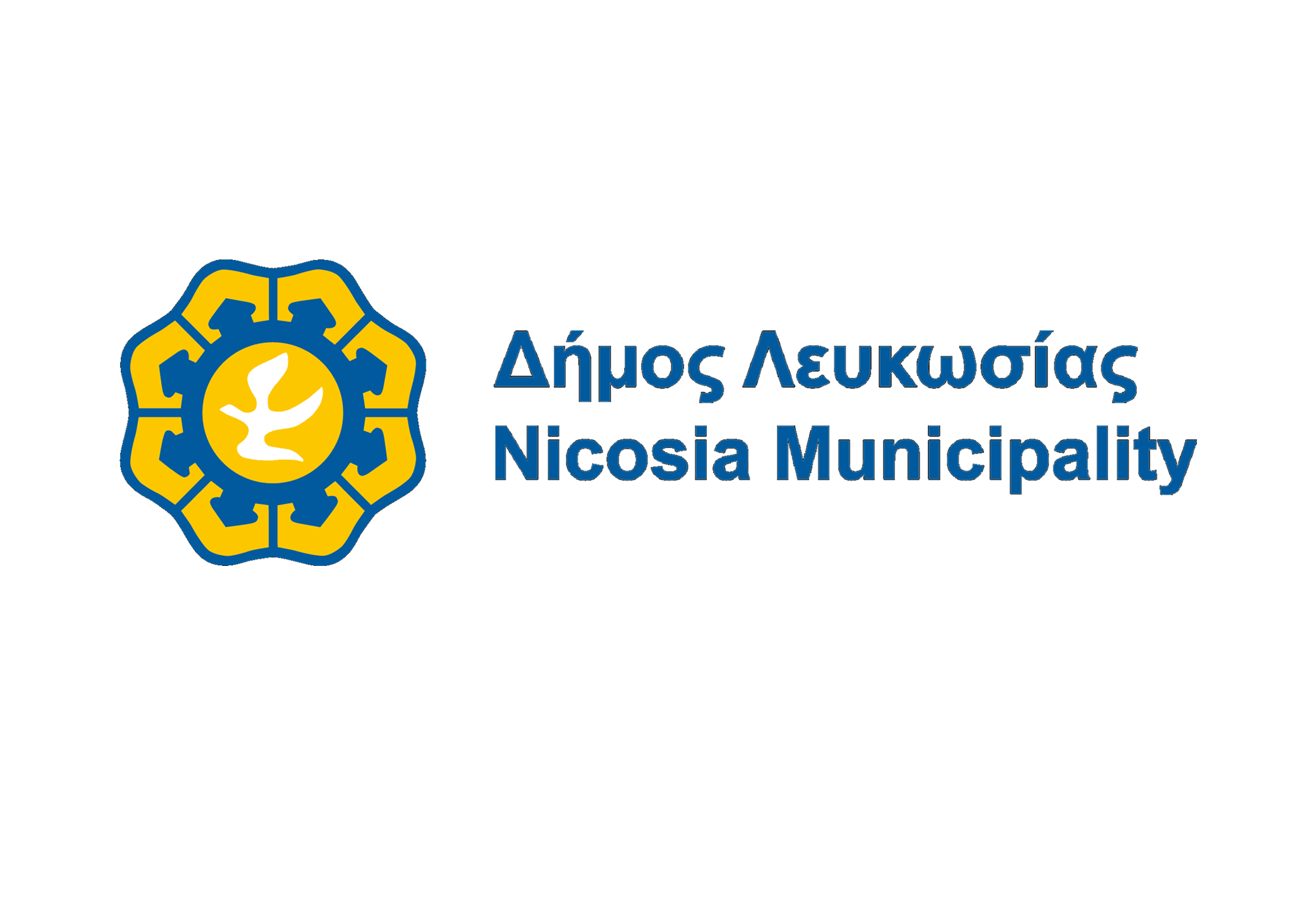— About MUAN —
MUAN #10: In 2009 the ESA advisory structure remarked that there were relatively few collaborative papers from the upper atmosphere and plasma instruments on the Mars mission, and the reason was soon identified as mostly due to absence of coordinated and simultaneous observations by those instrument teams, to study upper atmospheric and ionospheric dynamics in response to external drivers (e.g. solar wind forcing).
At a brainstorming meeting at ESTEC in 2009 the idea was born to improve the Mars Express data coverage and coordination by operating instruments like Aspera, MARSIS-AIS and MaRS together in dedicated campaigns, during which more telemetry was allocated by the ESA mission management. In order to understand Mars Upper Atmosphere forcing by the solar wind such campaigns were planned to be arranged every second year (i.e. in 2010, 12 and 14) for a number of weeks, when the instruments were operated in special extended modes. MUAN - The Mars Upper Atmospheric Network - was born.
Since 2009, i.e. for the last 9 years, members of the MUAN network have organised several active campaigns, 9 annual workshops, and an ISSI team. They have taken part in the planning the first coordinated multi-satellite studies of the Mars Upper Atmosphere by ESA Mars-Express and NASA MAVEN in concert, combining complementary data from various locations in the Mars upper atmosphere and magnetosphere or providing upstream solar wind conditions near Mars for each other. The most recent "MUAN-associated" workshop was held in the shape of the first MAVEN / MEX coordinated workshop in Colorado last year, named the "Mars Aeronomy Conference".
We feel that the work-form of recent MUAN meetings, i.e. a loose, open network to bring together scientists around specifically obtained data sets from particular events exposing solar wind forcing of processes in the Martian atmosphere, has a value far greater than the original goals of MUAN - to bring together scientists from complementary instrumentation. Recent studies have shown that there exists a closer connection between lower and upper atmospheric (i.e. thermospheric, ionospheric and magnetospheric) processes at Mars than was previously understood (particularly on early Mars). With existing missions such as MEX and MAVEN, together with new surface-based assets, and the advent of new missions with more atmospheric foci like the ESA/Russia TGO mission, the Indian MOM mission and other relevant missions from China (2020), the UAE (2020) Japan (2024) and others on the horizon, we see the value in expanding the established working procedures and successful open framework of MUAN to embrace new opportunities for combined atmospheric and plasma studies of the Mars environment. In addition, present and future instrument on the Mars surface like radiation monitors (Curiosity) and magnetometers (Insight and ExoMars 2020) can contribute meaningfully to aeronomy and plasma physics at Mars.
Following expanded discussions with representatives of other missions and programs we have therefore decided to hold one - maybe last - "10th MUAN Jubilee Meeting" to wrap up our previous work on the upper atmosphere and discuss possibilities for future coordinated studies of ionospheric / atmospheric coupling at Mars within a wider, but similarly open and unconventional collaborative framework as developed by MUAN in the past.
